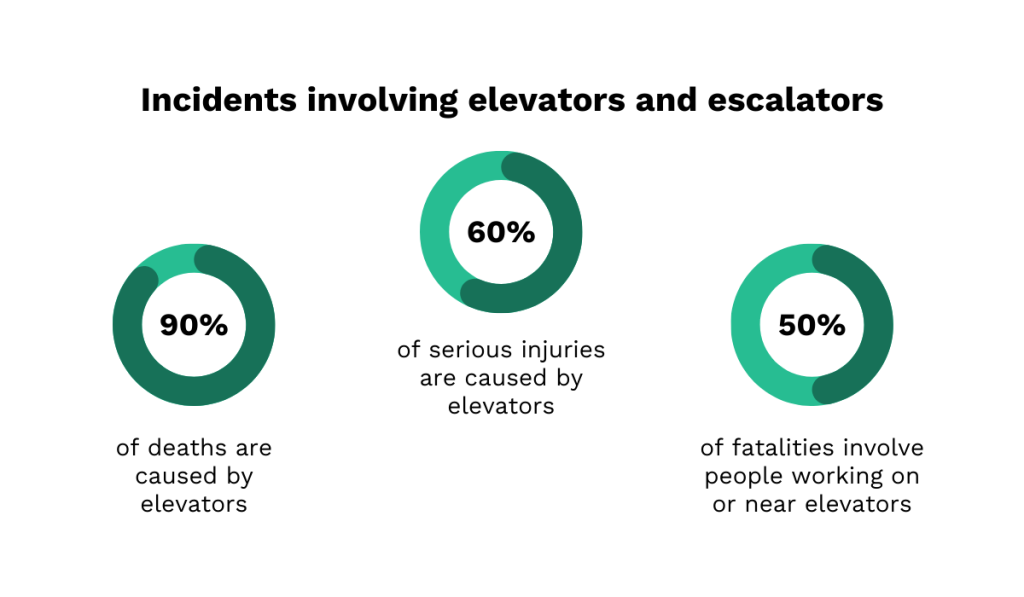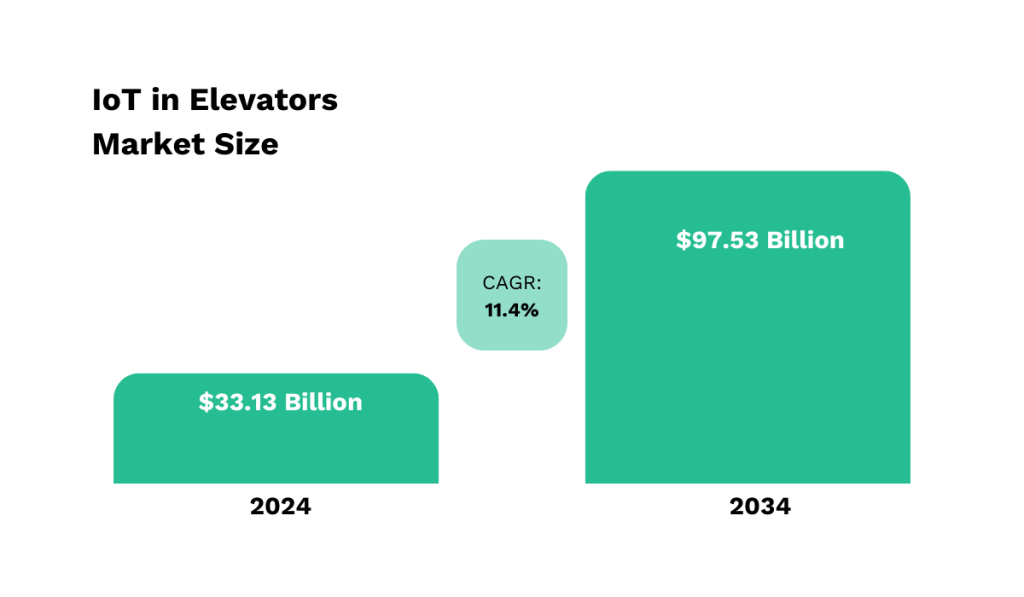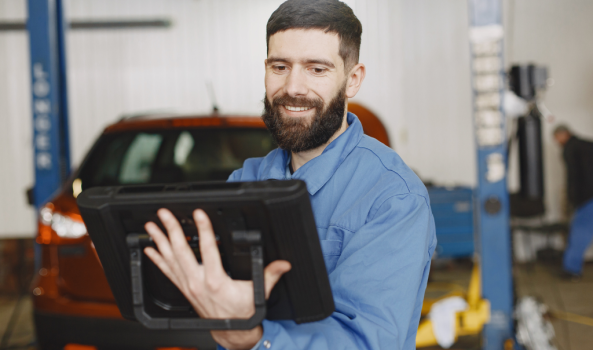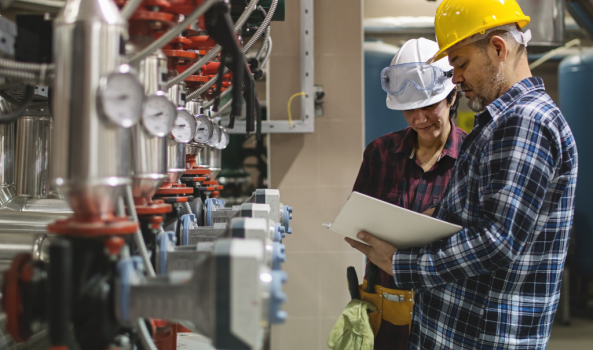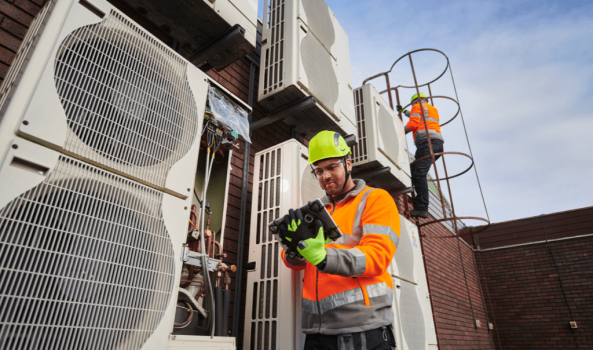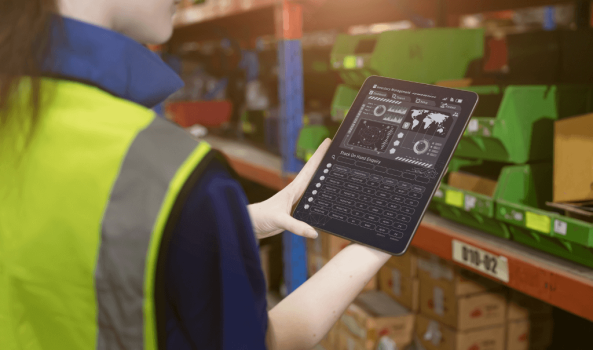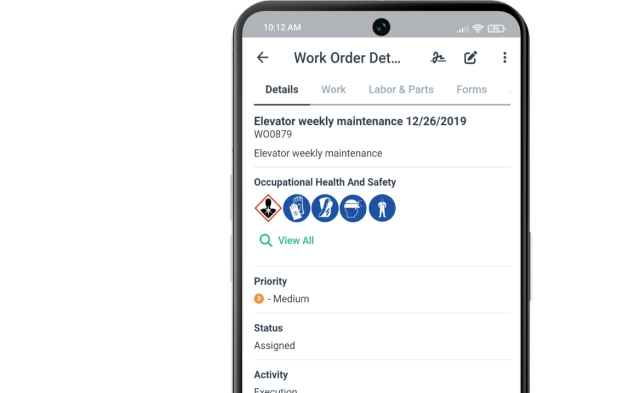Get a Free WorkTrek Demo
Let's show you how WorkTrek can help you optimize your maintenance operation.
Try for freeKey Takeaways:
- In the US, elevators cause 31 deaths and 17,000 serious injuries each year.
- Over 80% of Chinese elevator accidents are linked to poor maintenance.
- Preventive maintenance is three times more cost-effective than reactive repairs.
- US elevator technicians’ jobs are projected to grow 6% by 2033.
Most people step into an elevator without a second thought, until something goes wrong.
A sudden jolt, a stuck door, or a malfunction can turn a routine ride into a serious hazard.
Behind the scenes, elevator maintenance is what keeps these systems safe, compliant, and cost-effective.
In this guide, we will explain why elevator maintenance matters, who is qualified to perform it, how it has evolved, and much more.
Why Elevator Maintenance Matters
Elevator maintenance is critical for several reasons. Here are the three most important ones.
Safety
How safe is the elevator you step into every day?
The answer depends entirely on whether it has been maintained properly.
In the United States alone, incidents involving elevators and escalators cause 31 deaths and around 17,000 serious injuries each year, according to an analysis by CPWR.
Elevators are responsible for most of these tragedies, accounting for about 90% of fatalities and 60% of serious injuries.
Many victims are not passengers at all but maintenance and repair workers who are in or near the shafts when something goes wrong.
The danger is not confined to one country.
In China, government figures show that 48 elevator accidents in 2016 claimed 41 lives.
Peng Jinsheng, Director of the Beijing Elevator Commerce Committee, said that the majority of them were linked to poor maintenance or repairs:
“Over 80% of accidents are due to poor maintenance or repairs.”
Moreover, media report says that cost-cutting and weak oversight have left five out of every 100 lifts or escalators posing a safety hazard.

These statistics underline a simple truth.
When maintenance is skipped or done improperly, the risks climb sharply.
Elevator maintenance failures can kill, and both passengers and maintenance workers are at risk if procedures and inspections are not followed to the letter.
Compliance
Elevator maintenance is not just a safety issue.
In most countries, it is a matter of strict legal compliance.
National and local regulations dictate how often inspections must take place, what specific checks are required, and who is authorized to carry them out.
In North America, for example, the ASME A17.1–2022 and CSA B44–2022 safety codes set detailed standards, while OSHA requires thorough annual inspections along with additional monthly checks to ensure proper operation.

In Europe, rules are based on the Lifts Directive 2014/33/EU, enforced through national oversight bodies.
In India, the Bureau of Indian Standards sets its safety framework.
Compliance is not optional.
Technicians must follow established procedures, such as those in the ASME A17.2 Inspection Guide, and building owners are legally responsible for ensuring that work is performed and documented.
When these responsibilities are ignored, the consequences can extend far beyond fines, as the example below illustrates.

In Turkey, four employees of a maintenance company were sentenced to prison after a fatal elevator accident was linked to maintenance negligence.
Cost Avoidance
The financial side of maintenance is just as important.
According to Industry Arc, a preventive maintenance contract for elevators in a small building costs between $3,500 and $5,000 per year, while a high-rise building could require $8,000 to $10,000 annually.
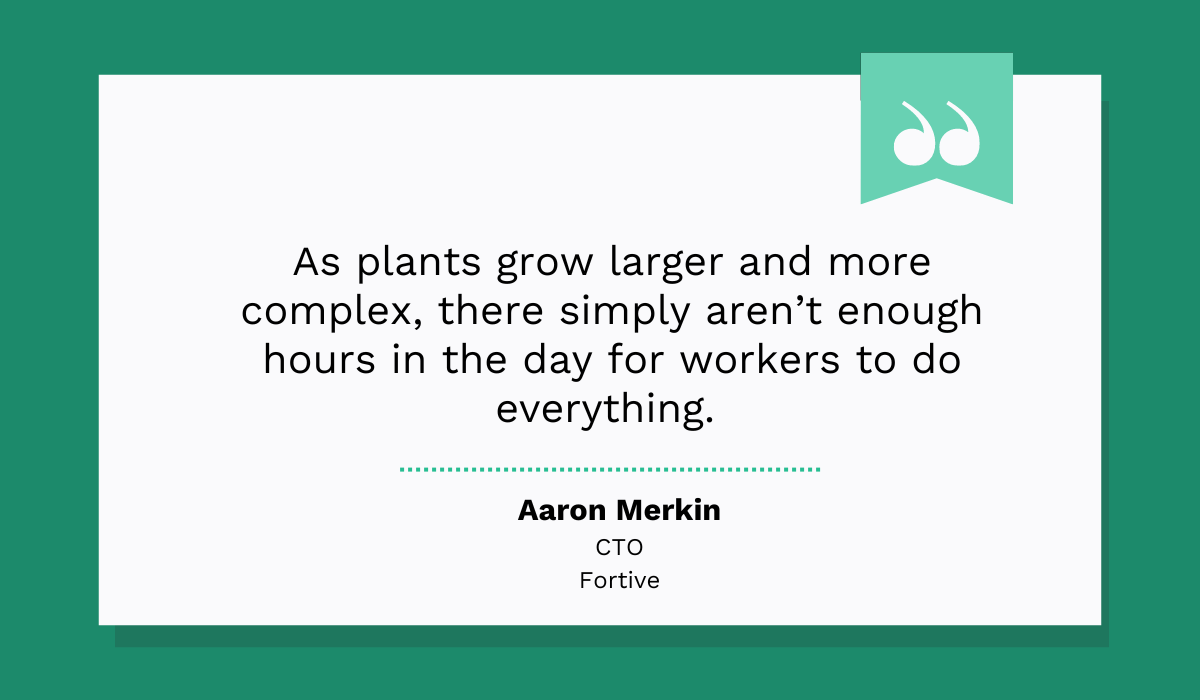
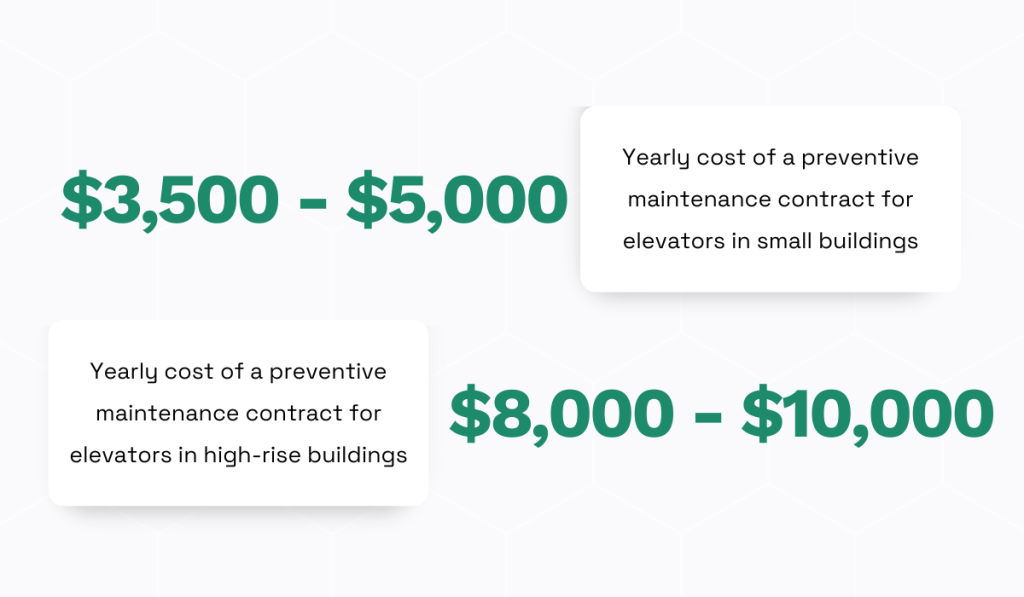
These figures may seem significant, but they pale in comparison to the cost of emergency repairs and component replacements.
Zach Williams, engineering manager at Kito Crosby Australia, the global leader of the lifting and securement industry, sums it up clearly:
“Proactive maintenance is nearly three times more cost-effective than reactive maintenance.”
The real savings, however, often come from avoiding the fallout of poor maintenance.
Consider the recent case in Oakland, California, where an elevator in a six-story apartment building remained out of service for more than a month.

Tenants, many of them elderly or with mobility issues, repeatedly reported the problem to the maintenance provider, but nothing was done.
The issue eventually reached the city attorney, triggering penalties under Oakland’s new Elevator Maintenance in Residential Buildings Ordinance.
This law mandates prompt repairs, temporary housing for affected residents, and fines that can reach thousands of dollars per day for noncompliance.

Incidents and regulations like this make the value of regular maintenance impossible to ignore.
Beyond safety and compliance, it is a safeguard against reputational damage, operational disruption, and the cascading losses that follow a single preventable failure.
Who Can Perform Elevator Maintenance
Not everyone is qualified to maintain an elevator.
The work requires technical knowledge, practical skills, and formal certification.
In most countries, only licensed and trained professionals can legally perform the job, and their credentials must align with national or local regulations.
In the US, the National Association of Elevator Contractors (NAEC) and the National Association of Elevator Safety Authorities International (NAESA) offer key certifications:
| Certification | Issued by | Eligibility highlight | Focus |
|---|---|---|---|
| Certified Elevator Technician (CET) | NAEC | Training program or 10,000 hours of on-the-job experience | Technical theory, industry codes |
| Certified Accessibility and Private Residence Lift Technician (CAT) | NAEC | Training program or 6,000 hours of on-the-job experience | Private residence elevators, accessibility codes |
| Qualified Elevator Inspector (QEI) | NAESA | Education plus experience requirements | Inspection standards, safety compliance |
The demand for such professionals is only growing.
The US Bureau of Labor Statistics projects that employment for elevator and escalator installers and repairers will rise by 6% from 2023 to 2033, a rate faster than the average for all occupations.
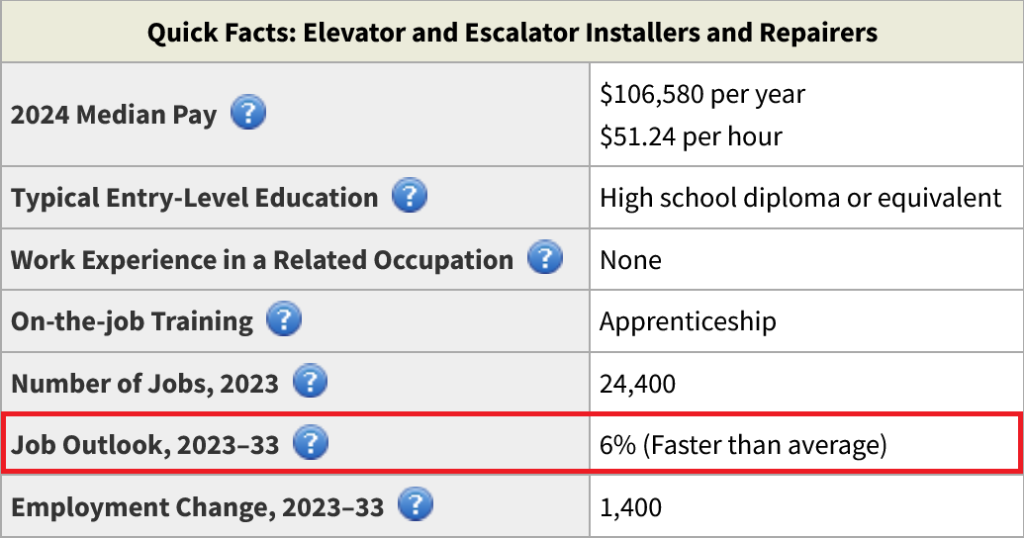
Around 2,200 job openings are expected each year during this period, many created by retirements or career changes.
This steady need reflects the essential role maintenance plays in both safety and business continuity.
As more commercial buildings, residential complexes, and specialized facilities rely on elevators, the demand for skilled technicians will remain strong, and so will the need for their work to meet the highest possible standards.
How Elevator Maintenance Has Evolved
Historically, elevator service followed a fixed-interval approach.
Technicians visited on a monthly or quarterly schedule to check for wear, lubricate components, and replace parts that were visibly worn.
While simple, this method often led to reactive repairs because issues were only discovered during a scheduled visit.
The introduction of Computerized Maintenance Management Systems, or CMMS, brought much-needed structure.
With CMMS platforms like WorkTrek, service teams can schedule tasks, track maintenance histories, and store compliance documents digitally.
Take a look at the image below. It shows how a maintenance request for an elevator can be turned into a detailed work order.

Photos can be attached, a priority level assigned, and the task scheduled on a shared calendar.
The technician then receives a notification on their phone with all the necessary information, including past service history, reported problems, supporting images, and a checklist.

These features make organizing work faster and more transparent.
Damir Fabijanković, Service Manager at METUS, has seen the difference firsthand:
“As an elevator maintenance company, we had many challenges working in the field, such as a large amount of work orders and their organization. With the WorkTrek mobile application, our technicians have a clearer division of work tasks, which improves their efficiency.”
Today, the industry is rapidly moving toward predictive maintenance powered by IoT sensors and artificial intelligence.
These systems continuously monitor factors such as door speed, motor vibration, hydraulic pressure, and ride quality.
The data is analyzed by machine learning models that can detect unusual patterns long before they cause downtime.
For example, N2 Infotech has developed an AI-driven predictive maintenance system specifically for elevators.
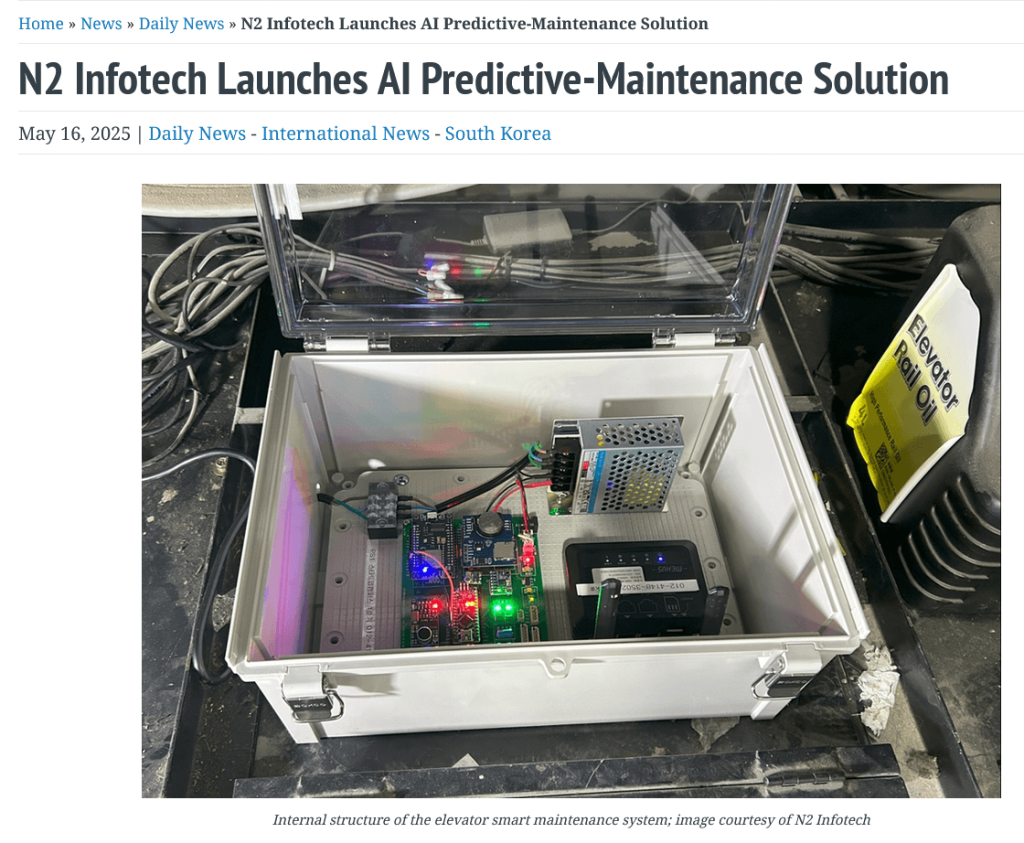
CTO Boeun Nam explains the idea behind it:
“In the past, there was no way to measure elevator usage quantitatively, so maintenance schedules mostly relied on engineer experience and intuition. With our system, we overcome these limitations using sensors and AI analysis to enable more systematic and precise maintenance.”
This shift in the industry is reflected in market trends.
According to Fact.MR, the global IoT in elevators market was valued at $33.13 billion in 2024 and is projected to grow at an annual rate of 11.4%, reaching $97.53 billion by 2034.
As these innovations become standard, elevator maintenance will progress toward a fully digitized strategy that keeps people safer and systems running longer.
What Is Involved in Elevator Maintenance
Elevator maintenance includes mechanical, electrical, and safety checks to keep the system operating safely and in compliance with regulations.
While exact steps depend on the elevator type, age, and jurisdiction, a typical service visit covers the following:
| Location | Typical tasks |
|---|---|
| Inside the car | Inspect lighting, ventilation fan, control panel, door operation, and emergency alarm; check for noise and vibration |
| Outside the car (landings) | Check door panels, sensors, and interlocks; test floor indicators; verify car leveling |
| In the machine room | Inspect the controller, motor, drive system, and main disconnect; check oil levels and electrical connections |
| On top of the car | Inspect safety gear, guide shoes, cables, and overspeed governor; test inspection station operation |
| In the pit | Check buffers, safety switches, lighting, ladder, and access door condition, and cleanliness |
For a more extensive list, check our ultimate elevator maintenance checklist.
Now, a CMMS can store these checklists digitally.
Beyond that, it can display relevant PPE and SOPs for each task, and record inspection results for compliance audits.

For example, EN 81-20:2014 requires stricter safe-access measures for pits deeper than 2.5 meters, including approved ladders and, in some cases, an access door.
In a CMMS, these requirements can be added directly to the relevant inspection task.
When the technician opens the work order on-site, the safety instructions appear on their mobile device, reminding them of the standard before they begin work.
This reduces the risk of oversight and improves safety and compliance.
Warning Signs of Trouble
Small changes in how an elevator behaves are rarely random. They’re often early warnings of a bigger problem.
If you notice any of these, the clock may already be ticking:
- Doors hesitate, bounce, or close more slowly than usual
- The car stops just above or below floor level
- Grinding, rattling, or humming noises
Ignoring these symptoms can turn a quick fix into days of downtime, expensive repairs, or even safety hazards.
The fastest way to act is to report them the moment they appear.
With WorkTrek, anyone from building staff to tenants can submit a service request on the spot through the WorkTrek app, web portal, or even a branded app.
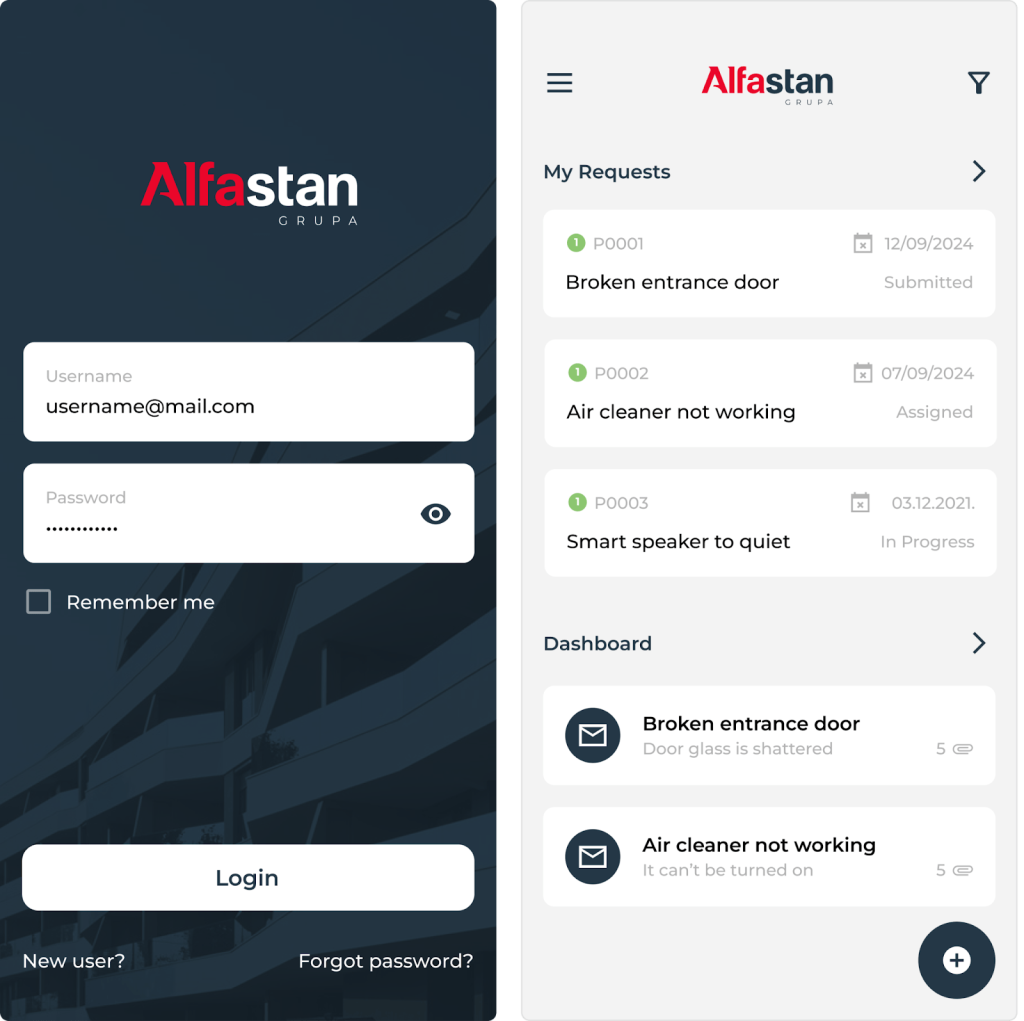
A quick description and a photo are enough to trigger an immediate alert to the maintenance team.
Updates go out automatically to everyone involved, so no one has to chase status updates by phone or email.
You get quicker responses, fewer emergencies, and a clear record of recurring issues, all of which keep the elevator running safely and reliably.
Conclusion
Hopefully, we made it clear that elevator maintenance is a critical safeguard for safety, compliance, and reliability.
A well-structured elevator maintenance program backed by digital tools can keep elevators working properly, extend their service life, and protect everyone who steps inside.
If you’re in charge of elevator maintenance, remember that the effort you invest today can prevent accidents, reduce downtime, and save significant costs tomorrow.




